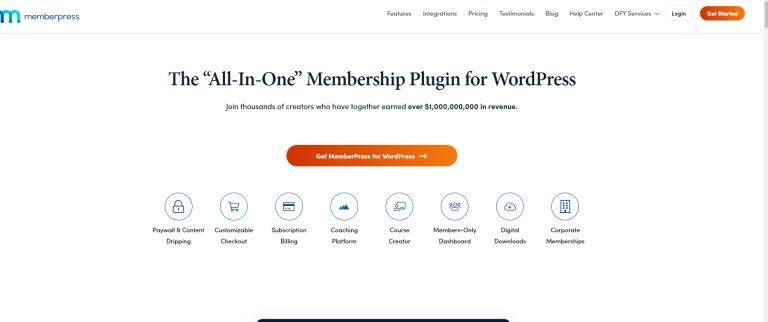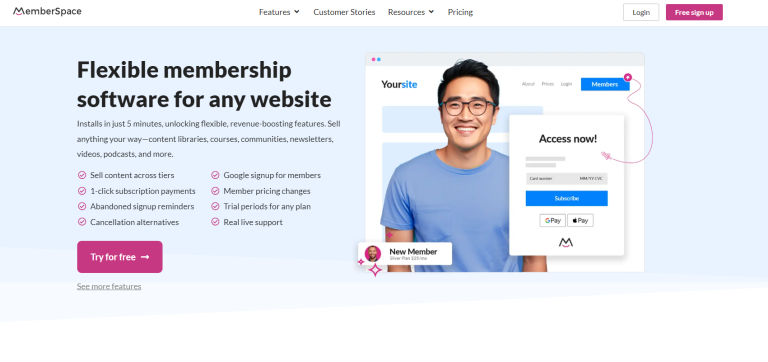How to Create a Sales Funnel for Membership Sites
Most membership sites struggle with conversions because they treat signups like one-time purchases instead of building relationships. I’ve helped dozens of businesses improve their funnels, and the mistake I see over and over is using generic sales tactics that don’t work for ongoing commitments.
The problem with regular sales funnels is they’re designed for single purchases, not monthly relationships.
Membership sites need a completely different approach because you’re asking people to trust you with their money every month. This guide shows you exactly how to build funnels that convert visitors into loyal, long-term members.
Step 1: Understand What Makes Membership Funnels

Before you start building anything, you need to wrap your head around why membership funnels work differently than regular sales funnels.
When someone buys a course or product, they’re making one decision. When they join a membership site, they’re making an ongoing commitment that they’ll question every month when that payment hits their credit card.
This means your funnel can’t just focus on getting the initial signup. It needs to start building trust and demonstrating ongoing value from the very first touchpoint.
The biggest mindset shift is moving from immediate conversions to lifetime value thinking. A customer who pays you $1,000 once is less valuable than a member who pays you $50 monthly for two years. Your funnel should attract and convert the people most likely to stick around, not just anyone willing to buy.
Key things that make membership funnels unique:
- Focus on ongoing value instead of single benefits
- Need stronger trust-building because of recurring payments
- Must pre-qualify prospects for long-term commitment
- Should start retention efforts before people even join
Step 2: Figure Out Your Ideal Members
You can’t build an effective funnel without knowing exactly who you’re trying to attract. But membership sites need more specific targeting than regular businesses because you need people who will stay engaged month after month.
Start by looking at your existing members if you have any. Who sticks around the longest? Who engages most with your content and community? These are the people you want to attract more of.
If you’re just starting out, think about who would find ongoing value in what you offer rather than just one-time help.
Demographics matter, but the psychology matters more. What drives someone to invest in ongoing learning or community rather than just buying a course and moving on?
Usually, it’s people who see themselves as continuously growing rather than just solving immediate problems.
Stay Problem Focused
Here’s what I always tell clients to figure out about their ideal members:
- What keeps them up at night that requires ongoing support to solve?
- What goals do they have that take months or years to achieve?
- What kind of community or ongoing learning would they actually pay for month after month?
Create a detailed picture of this person. Not just their age and job, but their commitment patterns, how they like to learn, how much time they have available, and what they’re willing to pay for ongoing value.
💡 The most successful membership funnels attract people who already see themselves as lifelong learners or community builders.
Step 3: Create Lead Magnets That Attract the Right People at the Right Time
Your lead magnet needs to do more than just get email addresses. It needs to attract people who are likely to value ongoing access to your expertise and community. Regular lead magnets cast a wide net, but membership site lead magnets should be more like a filter.
Think of your lead magnet as a preview of what members get regularly.
If your membership includes weekly training calls, create a mini-training series. If community discussion is a big part of your value, create a challenge that gets people talking to each other.
Lead magnets that work well for membership sites:
- Mini-courses that show your teaching style and depth of knowledge
- Community challenges that demonstrate how member interaction works
- Assessment tools that help people identify ongoing development needs
- Resource libraries that show the breadth of what you offer
- Recordings of live member events that preview exclusive content
The trick is making sure your lead magnet communicates that this is just a taste of ongoing value, not a standalone solution. Include references to additional resources, mention community discussions, or provide updates that show you’re continuously adding value.
Step 4: Build Your Email Sequence That Moves People Toward Membership

Your email sequence is where you build the relationship and trust needed for ongoing commitment.
I recommend a 7-email sequence that takes prospects from curious visitors to ready-to-commit members.
- Email 1: Welcome and Set Expectations
Don’t jump into sales immediately. Introduce yourself personally and explain what they can expect from you. Position yourself as someone who’s going to help them over time, not just deliver a quick solution.
- Email 2: Show You Understand Their Problem
Share a story about a challenge your membership solves while showing your expertise. This builds authority while demonstrating you understand what they’re going through.
- Email 3: Give Real Value
Provide something genuinely helpful while hinting at the depth available to members. This could be a strategy, tool, or insight that helps immediately but represents just a fraction of what members get access to.
- Email 4: Share Member Success Stories
Tell specific stories about member transformations and community highlights. Focus on ongoing results and community support rather than one-time wins.
- Email 5: Address Their Concerns
Talk directly about common hesitations around monthly commitments, time investment, or whether they’ll actually use the membership. Be honest about what membership requires while reinforcing the benefits.
- Email 6 & 7: Make Your Offer
Present your membership with clear next steps and genuine urgency if you have it (like limited enrollment periods or founding member pricing).
Step 5: Design Your Trial or Entry Strategy
Most membership sites benefit from some kind of low-risk entry point because asking someone to commit to monthly payments immediately is a big ask.
Trial options that work well:
- 7-day free trials for content-heavy memberships
- 14-day trials for community-focused sites
- First month at a discount instead of completely free
- One-time workshops or mini-courses that lead into membership
During the trial, don’t wait until the end to start conversion activities. Send welcome messages, engagement prompts, and value reminders throughout the trial period.
In the end, the goal is to get people using and valuing your membership before they have to decide whether to pay.
| Trial Length | Best For | Conversion Focus |
|---|---|---|
| 7 days | Content-heavy sites | Quick value demonstration |
| 14 days | Community-focused | Relationship building |
| 30 days | Complex programs | Full experience preview |
| Paid trial | High-value memberships | Serious prospects only |
Step 6: Create Your Membership Sales Page

Your sales page needs to communicate ongoing value rather than one-time benefits. People need to understand what they’ll get month after month, not just what they get when they first join.
Essential elements for membership sales pages:
- Clear explanation of what members receive on an ongoing basis
- Success stories that show long-term results and community benefits
- Detailed answers to questions about commitment and payments
- Preview of community or examples of member interaction
- Simple explanation of what happens after they join
Address the elephant in the room: why should someone pay you every month? Be direct about this. Explain what makes ongoing access valuable compared to one-time purchases. Use testimonials from members who talk about the ongoing support and community benefits.
Finally, make your pricing feel reasonable by showing the value clearly. If you’re charging $97 monthly, break down what that includes and compare it to alternatives like courses, coaching, or other solutions they might consider.
Step 7: Plan Your Onboarding and Retention
Your funnel doesn’t stop when someone joins. The onboarding experience determines whether they stick around past the first month, so it needs to be part of your funnel strategy from the beginning.
I recommend that you create a structured first week that introduces new members to your community, shows them how to get value from your resources, and helps them connect with other members. Social connections increase retention more than content access alone.
Example Week One onboarding checklist:
• Personal welcome message explaining next steps
• Introduction to community guidelines and how to participate
• Guide to available resources and how to use them
• Connection to other members through introductions or buddy systems
• Quick win or immediate value delivery to reinforce their decision
Build retention thinking into your entire funnel. Every email, every piece of content, and every interaction should reinforce why ongoing membership provides value they can’t get elsewhere.
Focus on Relationships
Your membership site funnel is really about building relationships that last. Focus on attracting the right people, demonstrating ongoing value, and making the commitment feel natural rather than risky.
When you get the relationship part right, you’ll have members who stick around for years rather than months.






